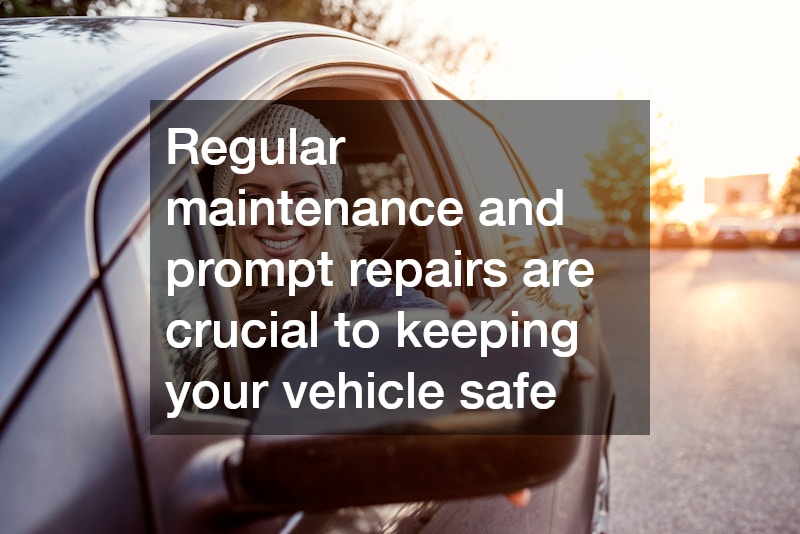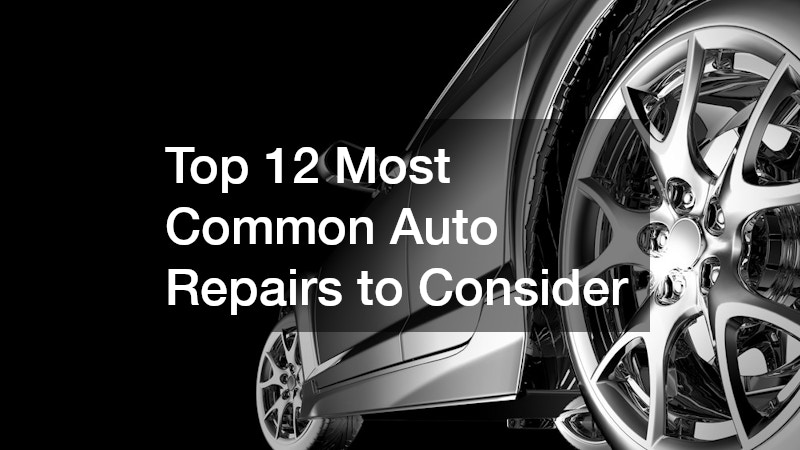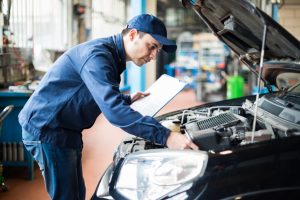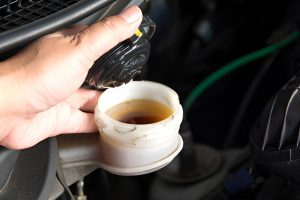Every vehicle owner will eventually face the reality of maintenance and repairs. Understanding the most frequently needed services can help you budget, plan ahead, and avoid unexpected breakdowns. From routine oil changes to more complex engine diagnostics, staying proactive about your car’s health is key. Whether you prefer to work with a local auto repair shop or handle light tasks yourself, this guide will walk you through the top 12 auto repairs you’re likely to encounter. Along the way, you’ll learn when to seek professional mechanics, which tasks you can DIY, and how to find reliable local auto parts to keep your ride running smoothly and safely.
No one wants to be stranded on the side of the road because of a preventable issue. With knowledge of common repairs, you can recognize warning signs early, schedule regular auto inspection appointments, and save money by addressing small problems before they escalate. From brake repairs to transmission overhauls, this blog provides detailed insights into each service, helping you decide when to visit an auto collision shop or consult a specialized diesel mechanic. Let’s dive into the 12 most frequent repairs and what you need to know about each.
Brake System Repairs
Brake system issues rank among the most critical and common automotive repairs. Worn brake pads, damaged rotors, or leaking brake fluid can compromise your vehicle’s stopping power. If you notice squealing noises, a pulsing brake pedal, or reduced responsiveness, it’s time to schedule brake repairs with experienced mechanics. During a typical brake service, technicians inspect pads, calipers, rotors, and fluid levels, replacing or resurfacing parts as needed. Investing in timely brake repairs not only safeguards your safety but also prevents more costly damage to the braking system down the line.
Most brake repairs involve replacing brake pads every 30,000 to 70,000 miles, depending on driving habits and pad material. Rotors may need resurfacing or replacement if they’re warped or excessively worn. A comprehensive brake inspection, often included in a routine tire rotation service, ensures that all components work together efficiently. Always use high-quality brake pads and fluid sourced from a trusted local auto parts supplier to maintain optimal performance and avoid premature wear.
Oil Change and Filter Replacement
Routine oil changes top the list of maintenance tasks and can prevent a host of engine issues. Engine oil lubricates internal components, reduces friction, and helps regulate temperature. Over time, oil breaks down and accumulates contaminants, leading to increased engine wear. Mechanics typically recommend oil change intervals every 3,000 to 7,500 miles, depending on oil type and driving conditions. During an oil change, technicians drain old oil, replace the oil filter, and refill with fresh, manufacturer-recommended oil.
Skipping scheduled oil services can result in sludge buildup, reduced fuel efficiency, and even engine failure. Many local auto repair shops offer oil change specials that bundle filter replacement, fluid top-offs, and a quick auto inspection of belts and hoses. Be sure to keep records of each oil change to maintain warranty coverage and resale value. When selecting oil and filters, shop at a reputable local auto parts store to ensure you’re getting genuine products matched to your vehicle’s specifications.
Tire Rotation and Balancing
Uneven tire wear not only shortens tire life but also affects handling and fuel economy. A professional tire rotation service involves moving each tire to a different position—front to rear and side to side—according to the manufacturer’s recommended pattern. Balancing ensures that weight distribution across the tire and wheel assembly is even, preventing vibrations at higher speeds. Experts suggest rotating and balancing tires every 5,000 to 7,500 miles or with every other oil change.
Consistent attention to tire maintenance extends the lifespan of both new and used car tires. Rotations help all four tires wear evenly, maximizing traction and safety. If you notice a vibration or pulling to one side, check tire balance and alignment. Many local auto repair shops combine tire services with alignment checks, using advanced equipment to measure camber and toe angles. Investing in routine tire care can save money by delaying the need for premature tire replacement.
Battery Testing and Replacement
Car batteries typically last three to five years, but extreme temperatures and frequent short trips can shorten their lifespan. A failing battery can leave you stranded with a car that won’t start. Mechanics often test battery voltage and load capacity during routine maintenance visits. A voltage reading below 12.4 volts at rest indicates the battery may be weakening. If testing reveals an inability to hold sufficient charge, battery replacement is recommended.
When replacing a battery, always choose one that meets or exceeds your vehicle’s cold-cranking amps (CCA) requirements. Many auto parts stores offer complimentary battery testing and installation services. If you drive a truck or vehicle with high electrical demands—such as aftermarket truck accessories or powerful sound systems—consider a heavy-duty battery to handle the extra load. Proper battery maintenance ensures reliable starts and protects sensitive electronics from power fluctuations.
Engine Diagnostic and Check Engine Light
Modern vehicles are equipped with onboard diagnostics (OBD-II) systems that monitor engine performance. When the computer detects an issue—such as a misfire, oxygen sensor failure, or emission control malfunction—it triggers the check engine light. Rather than ignoring a warning, schedule an engine diagnostic at a trusted auto collision shop or service center. Using a scan tool, mechanics retrieve diagnostic trouble codes (DTCs) to pinpoint the faulty component.
A thorough diagnostic may lead to repairs ranging from sensor replacements to more extensive work like catalytic converter service. Addressing problems early prevents reduced fuel economy, increased emissions, and potential damage to critical engine components. Many collision shops offer bundle deals that include a diagnostic scan, minor repairs, and a follow-up auto inspection to confirm all systems are functioning correctly after fixes are made.
Suspension and Steering Repairs
A vehicle’s suspension and steering systems absorb road impacts and maintain directional control. Worn shocks, struts, ball joints, or tie rods can lead to a bumpy ride, poor handling, and uneven tire wear. Mechanics typically inspect suspension components during routine maintenance or when you experience symptoms like excessive bouncing, drifting, or clunking noises. Repairing or replacing worn suspension parts restores ride comfort and stability.
When suspension repairs are needed, technicians may recommend replacing shocks in pairs—front or rear—to maintain balanced performance. Wheel alignment often follows suspension work to ensure tires track straight. If you’ve added heavy-duty truck accessories like lift kits or towing hitches, consult a suspension specialist to adjust spring rates and shock valving. Proper alignment and suspension maintenance reduce stress on other components and extend the life of used car tires.
Air Conditioning and Heating Service
Climate control systems keep occupants comfortable year-round but can degrade over time. Loss of cooling or heating power, strange odors, or unusual noises indicate the need for AC recharge or heater core repairs. Mechanics first check refrigerant levels and inspect hoses, compressors, and condensers for leaks. Recharging the system and replacing faulty parts restores proper function and indoor air quality.
In colder climates, a malfunctioning heater core or thermostat can leave you shivering behind the wheel. Technicians may perform a heater core flush, replace the thermostat, or service the radiator and cooling system. Scheduling AC and heating checks before peak summer or winter seasons prevents unexpected failures. For vehicles used in towing or off-roading, specialized service may be required to handle additional heat loads and maintain cabin comfort.
Transmission Service and Repairs
The transmission transfers power from the engine to the wheels, making it a complex and costly component to repair. Regular automatic transmission fluid changes—similar to oil changes—help prevent overheating and wear. Mechanics recommend fluid and filter replacement every 30,000 to 60,000 miles, depending on driving habits. Signs of transmission trouble include slipping gears, harsh shifts, or delayed engagement.
If maintenance is neglected, you may face a full transmission rebuild or replacement, which can cost thousands. A certified diesel mechanic can perform specialized transmission diagnostics for diesel trucks, identifying issues early. Manual transmissions require clutch inspections and occasional fluid changes. Choosing a reputable local auto repair shop that offers transmission services ensures proper fluid selection and professional workmanship.
Exhaust System and Muffler Repairs
A healthy exhaust system reduces noise, controls emissions, and directs harmful gases safely away from the cabin. Rust, corrosion, or damage to pipes, catalytic converters, or mufflers can cause bubbling noises, decreased fuel efficiency, or a failed emissions test. Mechanics inspect the entire exhaust path, repairing leaks, replacing damaged sections, and ensuring hangers and gaskets are secure.
Catalytic converters are expensive components—replacement costs can soar if neglected. Regular visual inspections and prompt exhaust repairs at a certified auto collision shop help you avoid fines for emissions violations. If you’ve upgraded engine performance or added aftermarket truck accessories that affect backpressure, consult an exhaust specialist to balance power gains with emissions compliance.
Fuel System Cleaning and Injector Service
Over time, deposits can accumulate in the fuel injectors, intake valves, and combustion chambers, reducing engine efficiency. Mechanics recommend professional fuel system cleaning every 30,000 miles to remove buildup and restore smooth operation. Injector service may include ultrasonic cleaning, seal replacement, and flow testing to ensure proper spray patterns.
Reduced performance, rough idling, or poor fuel economy are telltale signs of a dirty fuel system. Diesel engines benefit from specialized injector maintenance performed by a skilled diesel mechanic. Keeping the fuel system clean not only boosts power but also extends the life of the fuel pump and filters. Use high-quality fuel and consider periodic fuel additive treatments to minimize deposits between professional cleanings.
Wheel Alignment and Steering Calibration
Precise wheel alignment keeps tires rolling straight and prevents uneven wear. Alignment involves adjusting the angles of the wheels—camber, toe, and caster—to manufacturer specifications. Mechanics use computerized alignment racks to measure current angles and make corrections. Misaligned wheels can cause drifting, uneven tire wear, and increased steering effort.
Alignments are often recommended after suspension repairs, tire replacement, or if you hit a curb or pothole. Combining alignment with a tire rotation service maximizes tire life. Some shops offer alignment checks as part of an auto inspection to catch issues early. Proper alignment enhances handling, improves fuel economy, and prolongs the lifespan of used car tires.
Electrical System Diagnostics and Repairs
Modern vehicles rely on complex electrical systems to power lights, infotainment, sensors, and engine control modules. Faulty wiring, blown fuses, or failing alternators can lead to intermittent failures, warning lights, or a no-start condition. Mechanics use multimeters and specialized scan tools to trace electrical faults and test component operation.
When dealing with electrical repairs, it’s essential to source quality parts from a reputable local auto parts supplier. Aftermarket components can vary in reliability, so OEM-level items often deliver better longevity. If you’ve installed aftermarket accessories—like upgraded audio or lighting—ensure the wiring harnesses are correctly fused and grounded. Professional mechanics can integrate new systems without overloading existing circuits.
Regular maintenance and prompt repairs are crucial to keeping your vehicle safe, efficient, and reliable. From routine oil changes and tire rotation service to more involved transmission or exhaust repairs, understanding the most common auto issues helps you plan and budget effectively. Whether you choose a neighborhood local auto repair shop or specialized services from an auto collision shop or diesel mechanic, the key is proactive care and working with trusted mechanics. By staying ahead of wear and tear, using quality local auto parts, and scheduling timely auto inspection appointments, you can extend your vehicle’s lifespan and enjoy peace of mind on every drive.











